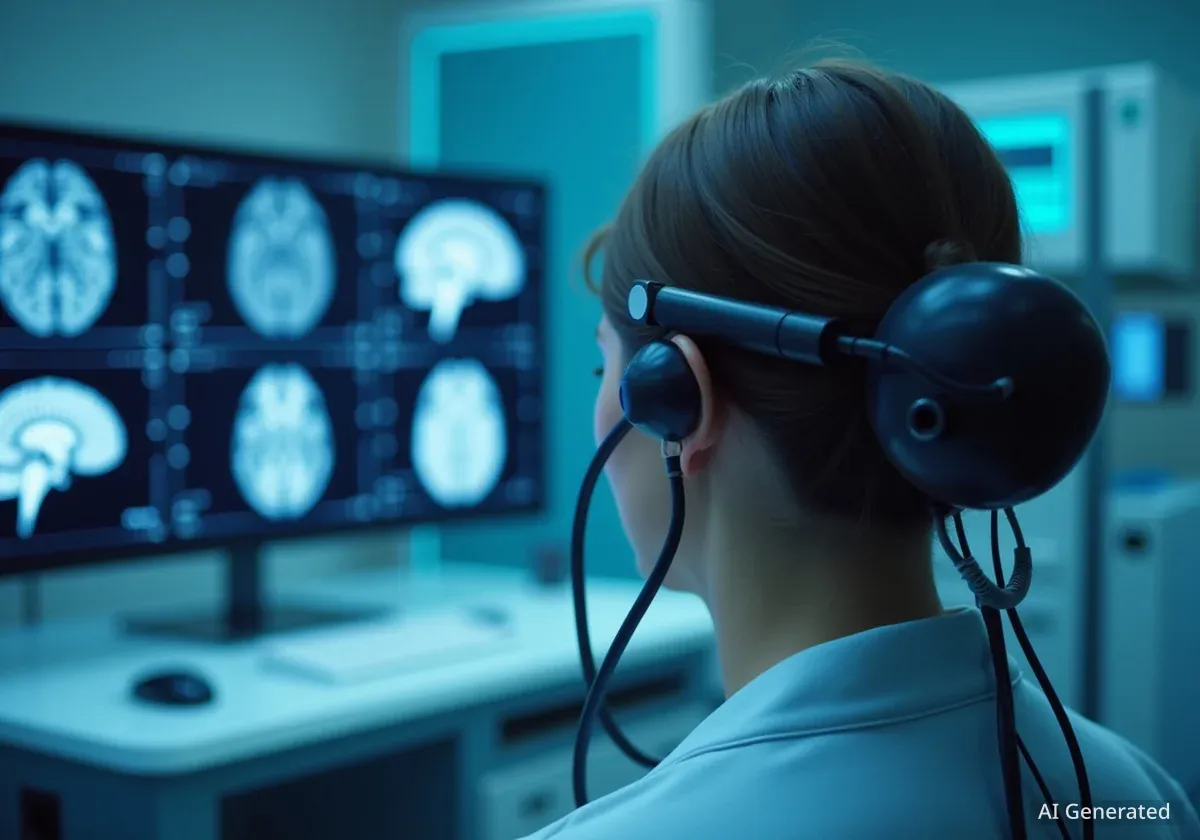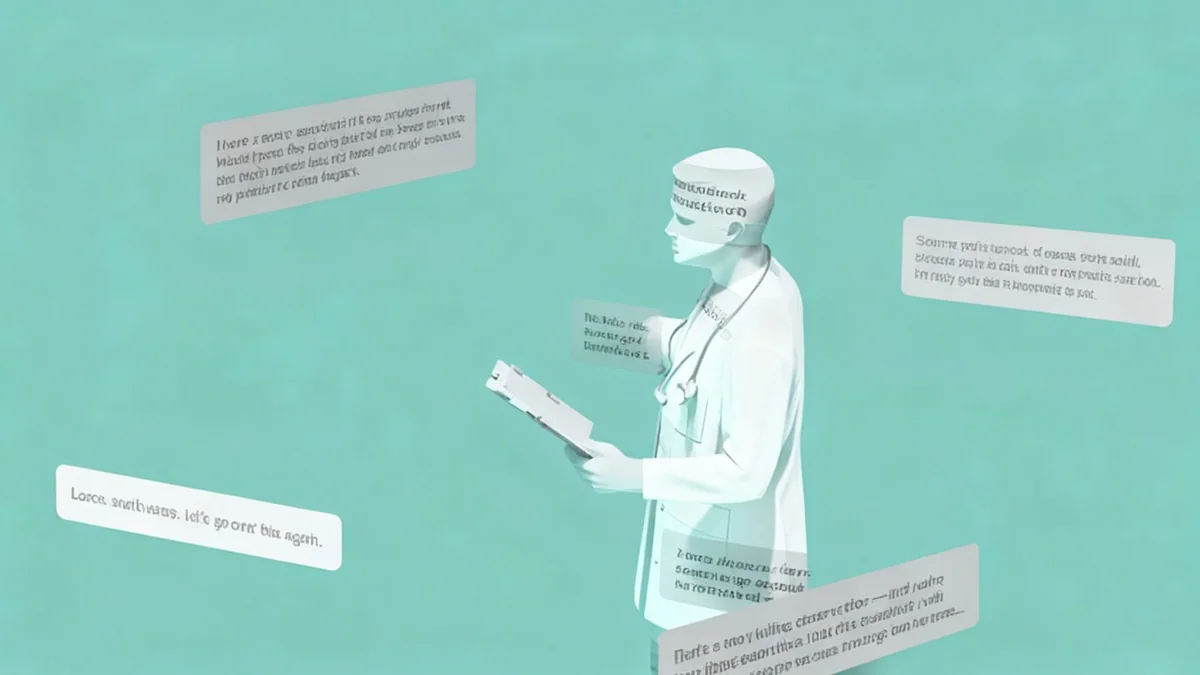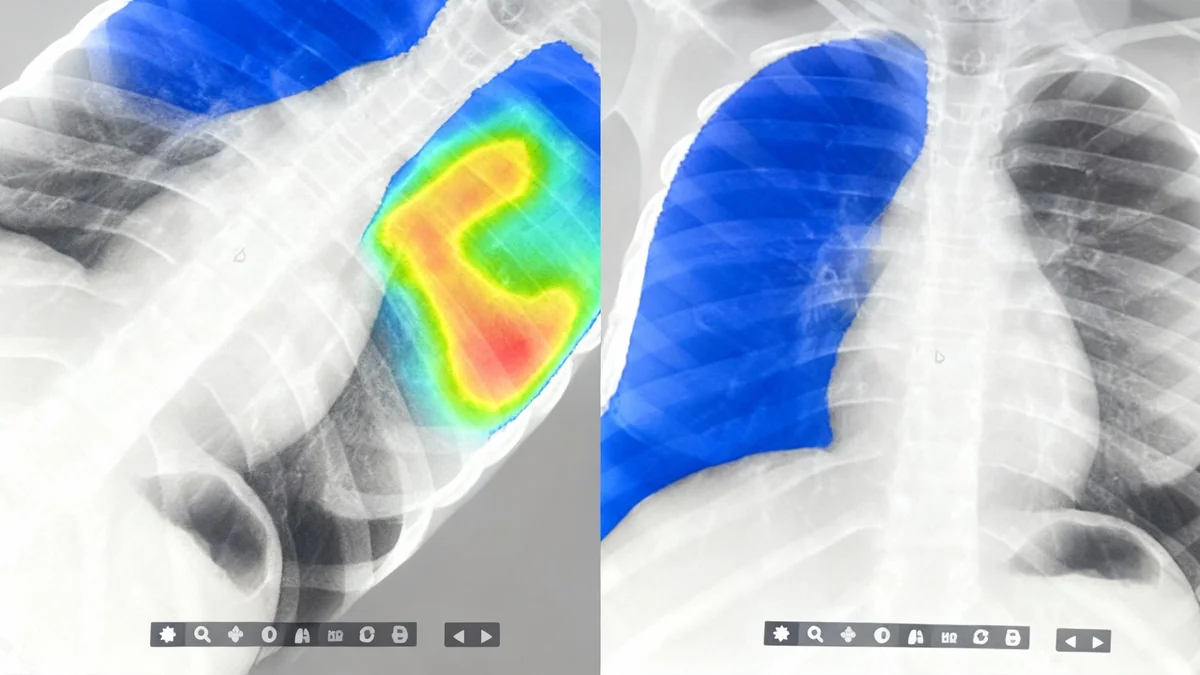Researchers at the Medical University of South Carolina (MUSC) have developed a method using artificial intelligence to predict which smokers will respond best to a brain stimulation treatment designed to help them quit. The study, which combined machine learning with brain imaging, identified a specific neural network as a key indicator for the success of repetitive transcranial magnetic stimulation (rTMS).
This discovery could pave the way for personalized treatment plans for smoking cessation and other substance use disorders, moving away from a one-size-fits-all approach to neuromodulation.
Key Takeaways
- A MUSC study used AI to analyze fMRI brain scans and predict the effectiveness of rTMS for smoking cessation.
- The study found that connectivity in the brain's "salience network" is the strongest predictor of treatment success.
- This finding challenges previous research that focused primarily on the brain's "reward network" in addiction.
- The results could lead to personalized rTMS treatments, helping doctors select patients most likely to benefit.
A New Approach to Smoking Cessation
Repetitive transcranial magnetic stimulation, or rTMS, is a non-invasive procedure that uses electromagnetic pulses to modulate brain activity. It is approved by the Food and Drug Administration (FDA) for treating conditions like depression, obsessive-compulsive disorder, and more recently, for smoking cessation.
MUSC Health was the first medical center in South Carolina to offer rTMS as a treatment for individuals trying to quit smoking. Standard protocols involve multiple sessions targeting the left dorsolateral prefrontal cortex, a region of the brain associated with cravings and self-control. Clinical studies have shown this can significantly reduce cigarette consumption.
However, the effectiveness of rTMS can vary among individuals. The goal of the new MUSC research was to find a way to identify who would benefit most from the therapy before treatment begins. "We want to improve the effectiveness and specificity of rTMS and reduce side effects," stated Dr. Xingbao Li, the study's lead author and an associate professor at MUSC.
Harnessing AI and Brain Imaging
To achieve this, Dr. Li's team turned to artificial intelligence. They used a machine learning model to analyze a rich dataset collected during a previous clinical trial at MUSC. That earlier study involved 42 participants who wanted to quit smoking.
The original trial was structured as follows:
- Participants were divided into two groups. One received genuine rTMS, while the other received a sham, or placebo, stimulation.
- Before each session, participants were exposed to smoking cues, such as handling cigarettes and ashtrays.
- During the 10 treatment sessions over two weeks, they watched videos of people smoking.
The results of that trial confirmed that participants receiving real rTMS smoked fewer cigarettes and reported lower cravings. Crucially, the researchers had also performed functional magnetic resonance imaging (fMRI) scans on the participants.
What is fMRI?
Functional magnetic resonance imaging (fMRI) is a neuroimaging technique that measures brain activity by detecting changes in blood flow. When an area of the brain is more active, it consumes more oxygen, and fMRI can track this increase in oxygen-rich blood. It allows researchers to see which parts of the brain are engaged during specific tasks or mental states.
In the new study, the machine learning algorithm was tasked with analyzing these fMRI scans to find patterns. The scans captured brain activity in two conditions: while participants were resting with their eyes closed and while they were viewing images related to smoking.
The Salience Network Emerges as a Key Predictor
The AI model sifted through complex data from various neural networks in the brain. The analysis revealed that one network stood out as the most reliable predictor of rTMS success: the salience network.
The salience network is responsible for filtering information and determining what is most important, or "salient," for a person to pay attention to. In smokers, this network helps drive the intense focus on cues related to smoking.
"We were surprised to find that the salience network plays such a crucial role in smoking behavior," Dr. Li explained. "This makes the salience network a mechanistic bridge between rTMS neuromodulation and successful smoking cessation."
This finding is significant because much of the historical research on addiction has focused on the brain's reward network, which is involved in pleasure and motivation. The MUSC study suggests that the salience network may be an even more critical target for intervention.
From Fixed Targets to Precision Medicine
The study highlights a shift in neuromodulation from stimulating a fixed brain region for all patients to a more precise, individualized approach. By identifying dysfunctional networks in a specific person, clinicians could tailor treatments for better outcomes.
Implications for Future Treatments
The ability to predict treatment response is a major step toward personalized medicine for addiction. By using fMRI and AI, clinicians could one day determine which patients are ideal candidates for rTMS before they undergo the weeks-long treatment course.
"Using machine learning to identify an individual's dysfunctional brain network and then applying rTMS to the dysfunctional network, we can select who prefers to use rTMS or who prefers medicine to help them stop smoking," said Dr. Li.
While the study was relatively small, with 42 participants, its findings provide a strong foundation for future research. The authors, who reported no conflicts of interest, noted that the methodology could be applied to other substance use disorders beyond nicotine addiction. The research was supported by a grant from the National Institutes of Health.
Dr. Li emphasized the importance of the study's innovative approach. "The study gives us a roadmap to extend personalized rTMS and build an fMRI and multimodal biomarker pipeline," he said. "This demonstrates that MUSC researchers can use novel and high-impact technology to move beyond fixed-target stimulation into precision neuromodulation."





